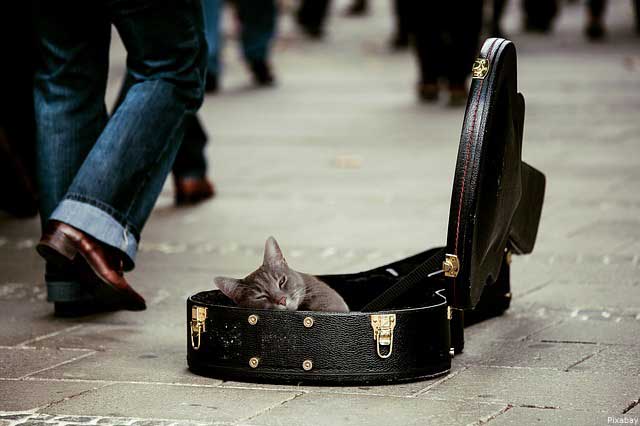|
Get Free Moving Quotes
|
|
Flying with Your Pet |
|
Rating : 0.0/5
424 Views
|
|
|
|
|
|
Whether you're moving across the country or internationally, you need to find a way to get your pet to your destination. There are plenty of preparations you can make and precautions you can take to ensure a smooth and safe flight for your animal. Moving can be stressful for both you and your pet, but considering these helpful tips can go a long way once moving day arrives.
Pre-flight preparations
If your pet is used to travelling by plane, then this shouldn't be too big of a problem. However, if this is your pet's first time on an aircraft, you want to make sure your animal feels safe and comfortable during transit. Here are some things you can do prior to your trip to facilitate the moving process:
- Book your flight as far in advance as possible. You should schedule your flight early so your pet is guaranteed a spot on the plane. Many airlines only allow a specific number of animals on each flight, so be sure to contact the airline directly to book one of these available spots for your pet.
- Purchase tickets for a direct flight. In the best interest of your pet, you should book a non-stop flight to reduce the risk of getting separated. Also, it can be beneficial to fly on weekdays when airports are less crowded and chaotic.

- Schedule your flight with the weather in mind. If you are flying during the summer, try to avoid the middle of the day. If you are flying during the winter, try to avoid early morning and evening flights. Pets shouldn't be exposed to extreme temperatures, especially when travelling in the cargo hold.
- Purchase a carrier. Base your purchase on your pet's specific needs (ie. soft-sided vs. hard-sided), as well as your particular travel plans. Will you be carrying your animal onto the aircraft,
or will your pet be flying in the cargo hold? Be sure to research the best possible option for your pet, including airline regulations and travel requirements. It is also important to get your pet accustomed to the carrier prior to the flight, perhaps even several weeks in advance.
- Visit your pet's veterinarian. Before you fly with your pet, visit the vet for a check-up. Make sure that your animal is healthy enough for flight and that all vaccinations are up to date. While you're at it, have your vet provide you a health certificate stating that your pet is well enough for travel.
- On the day of the flight, have a specific plan. We suggest feeding your animal roughly four hours before your scheduled flight so it doesn't have to travel with a full stomach. We also recommend giving your pet enough water throughout the day leading up to the flight. Of course, you should try to make sure your animal does its "business" prior to leaving your home for the airport. It may also be a good idea to tire your pet out by walking it or exercising it earlier that day.
In-flight accommodations
Make sure that you are in contact with the airline the week of your scheduled flight, confirming all of the details of your travel plans. If your pet is supposed to fly in the cargo hold, solidify those plans. If your animal will be your carry-on luggage, then prepare accordingly. Have your pet's health certificate handy, especially for international travel. Some veterinarians will even give a certificate of vaccinations.
While your animal may be just as stressed as you, this does not mean you should give it a tranquilizer of any kind. Sedatives, when combined with increased altitude pressures, can cause respiratory and cardiovascular complications for your pet. So, unless the veterinarian suggests and prescribes a certain medication to help your animal keep calm while in-flight, it's probably best to stay away from these.
Packing checklist
Just so you don't forget anything important, here are some suggestions for what to bring on travel day:
- Health certificate, medical records, etc.
- Emergency contact information
- Veterinarian contact information
- Photograph of your pet (just in case)
- Label for carrier (with contact info and pet info)
- Special medication(s)
- Collar with identification tag
- Pet wipes and grooming products
- Treats and/or food for entire trip
- Water and water dish
- Leash
- Plastic bags for waste
If you have reconsidered and would rather travel to your destination by car, here is a great resource for a long-distance move with your pet. Good luck with your move!
|
|
 |
Author : Ryan Hussey
on January 21, 2015
TopMoving.ca - Moving Expert
|
| |